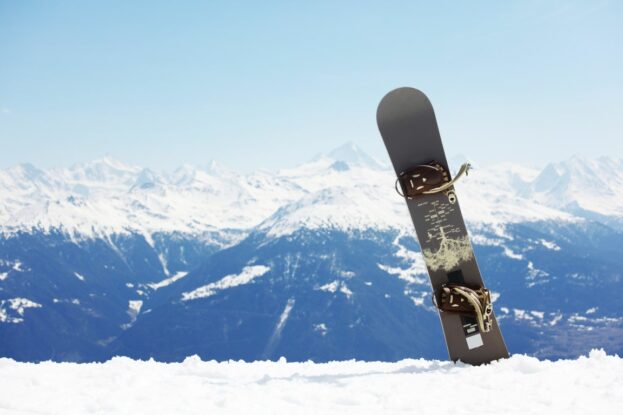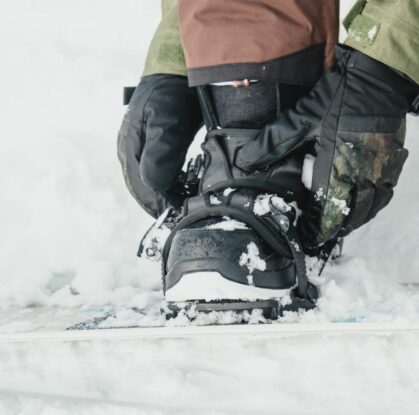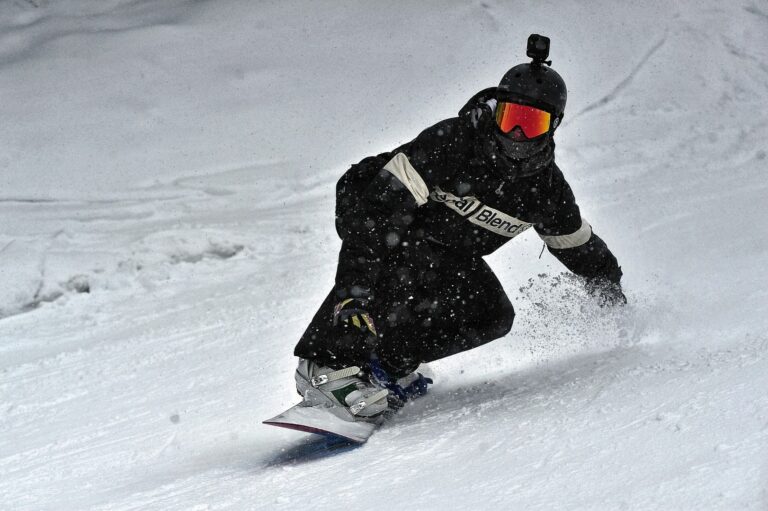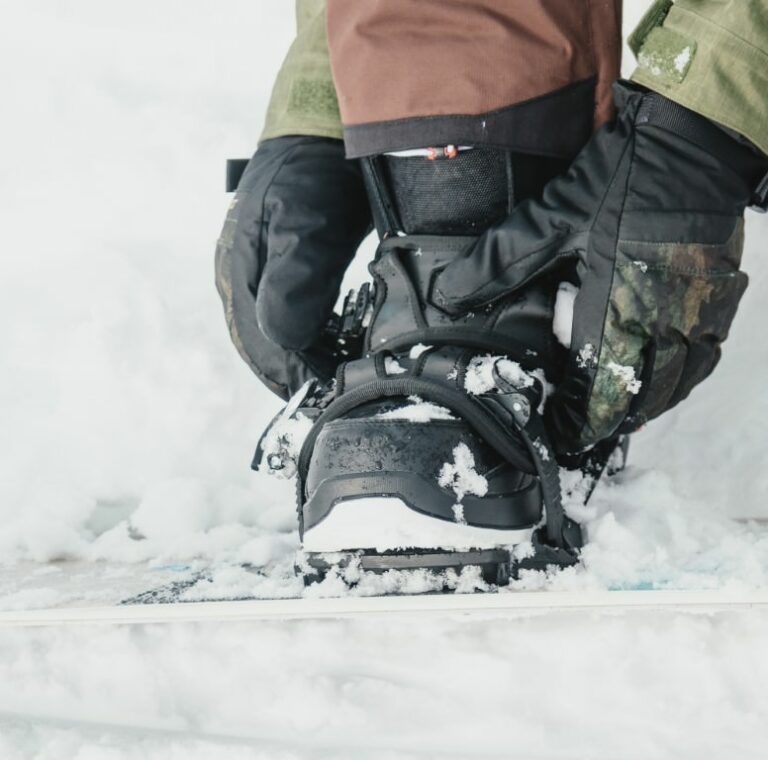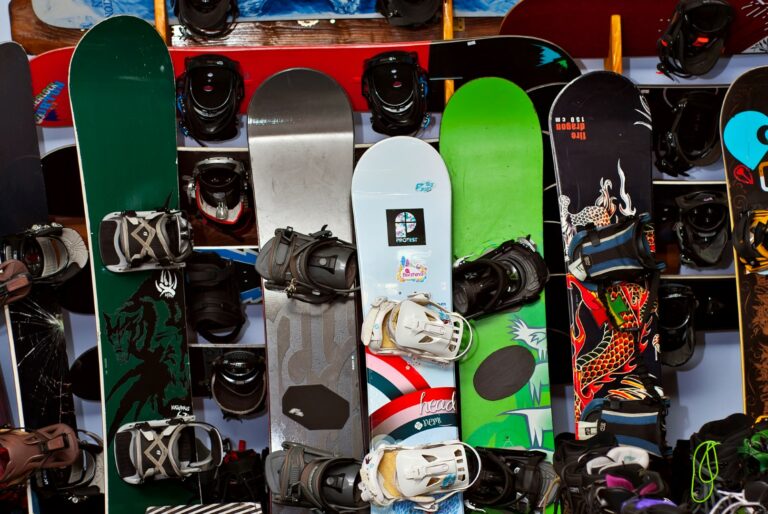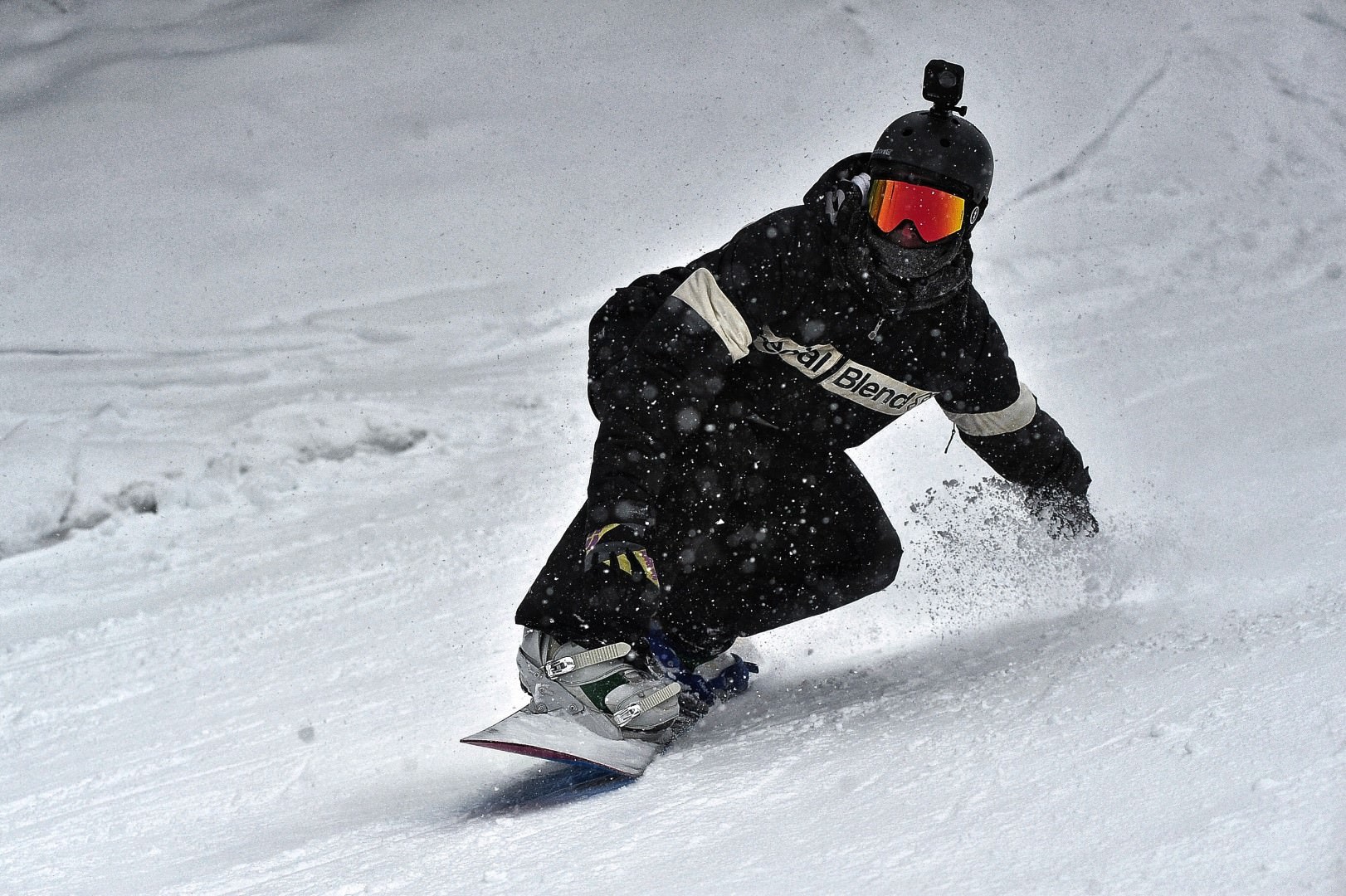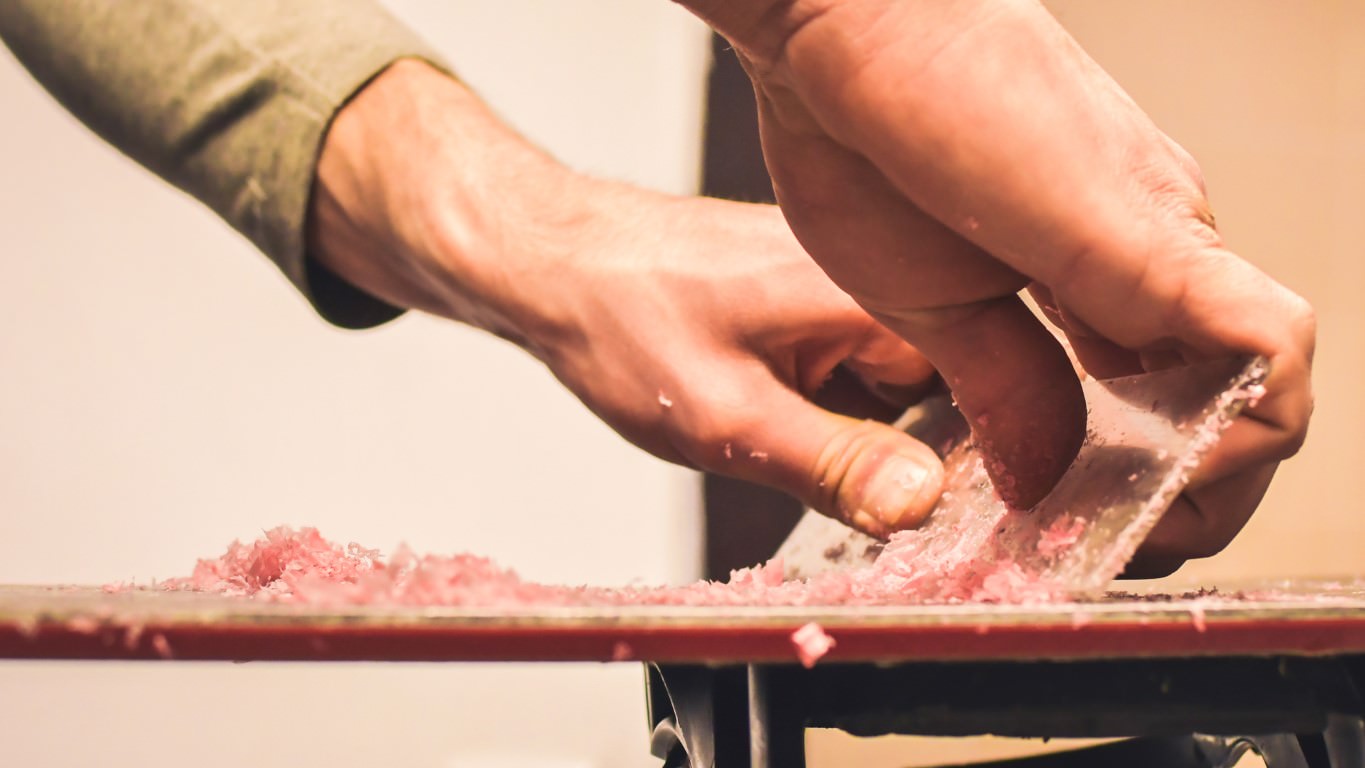The Importance of Properly Fitted Snowboard Boots
There are many reasons why having properly fitted snowboard boots is important when snowboarding. They provide the base of contact between you and the snowboard. Properly sized boots will also affect riding performance, comfort, how long you can snowboard in a given day and even how long the boots will last.
A properly fitted boot also affects how your body movements transfer into snowboarding performance. If your boots are loose or your foot is shifting around in the boot, your movements aren’t optimally transferring to your snowboard. You will have to exaggerate your movements to get the same performance output if your boots fit properly.
Comfort is also a big factor in how slow or fast your feet fatigue and will change how long you can snowboard in a given day. Boots that are too tight or have pressure points will cause numbness, cramping and pain. If your boots are too loose, your foot will move around, causing pain on the sides and could lead to blisters. Some boots may come with or can have heat moldable liners installed for a more comfortable fit.
Understanding Snowboard Boot Sizing: Mondopoint vs US Sizes
Mondopoint sizing was developed in the 1970s as a way to standardize boot sizing internationally. It essentially measures the foot length from the heel to the big toe and width at the widest point in millimeters. For the ski industry, it was simplified by switching to centimeters. US sizing is based on the UK system with different zero points, usually a size larger than a UK size.
Snowboard boots will come in both sizes, although the most accurate will be the Mondopoint size. Evo has this reference chart you can use to find the correct size for you. If shopping in person, the bootfitter will measure and find your appropriate size.
Snowboard Boot Size Conversion Guide: European, UK, and US Sizes
European, Uk and US sizes are slightly different and depending on where you live, you might be used to one or another. This conversion chart will help you figure out what size you will need.
Measuring Your Foot Correctly for the Perfect Boot Fit
You might assume the shoe size you wear regularly will work with snowboard boots. It’s important to note that snowboard boots should not be as loose as street shoes. Most people will size down a half or full size from their regular shoe size.
The best way to measure your foot is to reference the Mondopoint system.
Measure Foot Length
- Place a standard piece of paper on the ground against a wall.
- Put your back to the wall and place your heel on the paper against the wall.
- Make a mark on the paper at the tip of your big toe.
- Repeat the above steps with the other foot. One foot is usually slightly smaller than the other and you’ll want to size to your smaller foot.
Measure Foot Width
- Turn the paper so its long edge is against the wall.
- Place your inside arch against the wall on the piece of paper and make a mark at the widest part of your foot.
- Repeat this step with the other foot.
Finally, measure the markings of your foot with a metric ruler and obtain the length and width in centimeters. Take the measurements of the smaller foot. Reference the Mondopoint system and use the above charts if you need to convert to European, UK or US. You now can determine what boot size you need and if you require a narrow, regular or wide snowboard boot.
Men’s, Women’s Vs Kids Snowboard Boot Sizing Differences
Men’s, women’s and kids snowboard boots are all unique for sizing, flexibility and weight. Men’s boots will be stiffer and a touch heavier than women’s and kids. Female boots tend to be narrower and end a little lower on one’s calf.
The Mondopoint system can still be used to determine your sizing. Then use Evo’s guide to determine what size you need. There is no better alternative to trying on boots in person at a shop. It will give you a better idea of what size you need and what brand of boot fits your foot best.
Snowboard Boot Flex and How it Affects Your Riding Style
The flexibility of your snowboard boots you choose is dependent on your riding style, flex rating of your bindings and your personal preference. Snowboard boot flexibility is usually rated from 1 to 10. 1 being soft and 10 being stiff. You also want the boots to have a similar flex rating as your snowboard bindings.
Soft Flex (1-3)
If you’re more of a beginner, novice or park rider, you’ll want to get a pair of boots that are on the softer side. These allow for more forgiving movements and mobility when learning and performing tricks.
If you live in an area that has lots of powder, softer boots also allow for the extra flexibility that improves riding in powder. Softer boots are also much easier to walk in and are usually more comfortable to wear.
The cons of having softer boots are lack of support and a slight decrease in performance at higher speeds and steep runs. You can still ride the majority of the terrain you’re used to, you’ll just notice a lag in responsiveness.
Medium Flex (4-7)
If you’re an all-mountain rider, intermediate to advanced rider and seek out support and maneuverability, go for a medium stiffness snowboard boot. These boots allow for great mobility, responsiveness and support for a snowboarder who rides everywhere.
You get ideal support when riding fast on steeper terrain while allowing enough movement to ride in the terrain park. Medium flex boots offer the best of both worlds and are a very popular choice with the majority of snowboarders today.
Stiff Flex (8-10)
If your day revolves around steep terrain, challenging conditions and blisteringly fast speeds, go for a stiff boot. Snowboard boots that are stiff, limit your movements and provide the most responsive riding you can obtain. Advanced to expert riders, freeriders and fast freestyle snowboarders fall into this category.
The cons of stiff boots is that they do take time to get used to for riding and walking. Due to the responsiveness of this setup, you’ll notice you won’t have to exaggerate your movements as much and it might slightly affect your balance until you get used to them. Riders also exert more energy using a stiff boot so you might notice you fatigue faster.
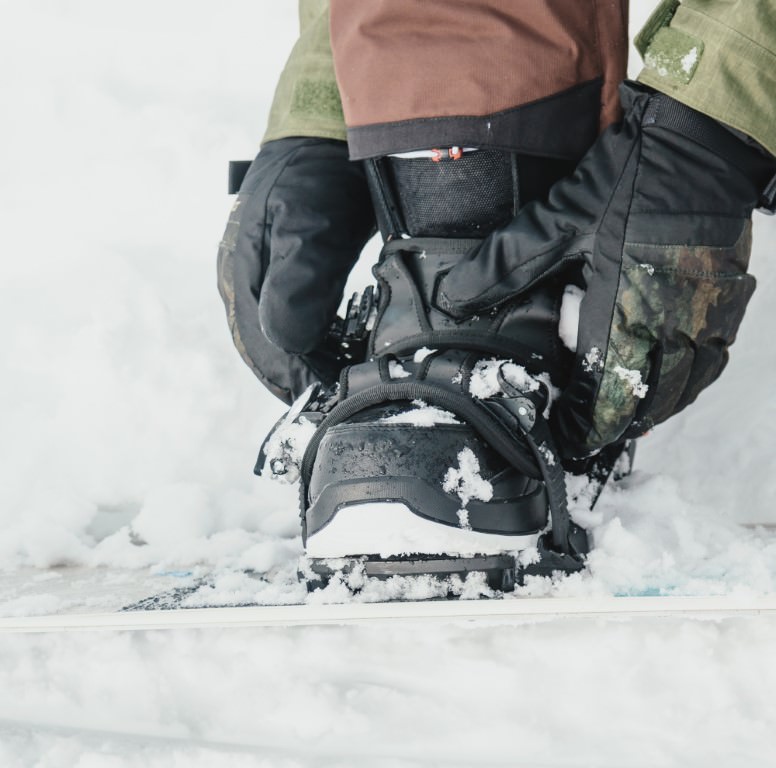
Snowboard Boot Lacing Systems: Traditional, Boa, and Speed Lace
There are currently three lacing systems on the market today each with their own list of pros and cons. Let’s go over each to determine which one is suitable for you.
Traditional Laces
Traditional laces are exactly what they sound like. It’s the same as what you’d find on a pair of regular boots. They provide custom tightness where you need it and they can be replaced easily and inexpensively.
This lacing system can be difficult to tighten with gloves on and can be prone to loosening if the knot comes undone.
Boa System
The Boa System is by far the easiest lacing system on the market. They use small steel cables incorporated into the boot which can be tightened by rotating a dial. Boots usually come with one or two wheels that tighten the boot. This system is fast, can be adjusted easily on snow and can customize tightness where you need it. It’s also very easy to loosen them off in the gondola, during a break or at the end of the day.
A con of this system is the difficult cable replacement if one snaps. They can loosen up as your day progresses but you can easily tighten it up. Some boots also only come with one dial that tightens the entire boot rather than the top and bottom.
If possible, get a boot with two dials so you can tighten the top and bottom of the boot independently. Finally, snowboard boots with the Boa System tend to be a bit more expensive.
Speed Laces
The final lacing system is the speed lace system. It’s similar to the Boa System, where a cable or lace is incorporated into the boot but you pull to tighten and then lock them. This system allows you to customize the tightness at a variety of spots on the boot and are faster than the traditional system. Think of this lacing system as bridging the gap between the other two.
Cons to this system are premature loosening if the lace becomes dislodged from the lock, difficult replacement of laces and pressure points until you get used to what tightness you need.
How Should Snowboard Boots Feel While Wearing Them?
It’s important to know that when you buy your boots, that will be the tightest they will ever be.
As you ride, the boots will pack out. If the boots are already loose, this will magnify as they age. It is important to figure out what sizing is going to work best with your riding style and comfort level. There are essentially two “fits” you can go for when choosing the right size, comfort fit and performance fit.
Comfort fit gives the rider a good level of performance without sacrificing comfort. Sizing should be similar to what is measured by yourself or the bootfitter. You’ll want to look for a boot with good heel lock and support around the sides of your foot. Your ankle and calf should not be able to move much inside the boot. You can slightly wiggle your toes but you should not have extra room.
If you’re after a performance fit, you don’t mind sacrificing a little bit of comfort for the gain in performance. Size yourself down at least half a size and throw in a supportive footbed and you’ll have a boot that fits like a glove. The tighter boot essentially means your foot should not move at all in your boot and all lower body movements will directly transfer into your snowboard without lag.
No matter what fit you choose, there should not be any noticeable pressure points, heel lift or space between the boot and your shin. If there is pressure on your toes, try slightly bending your knees like you would when you’re snowboarding. Does the pressure go away? If it does then you’ve found your size.
Wide or Narrow Feet and Snowboard Boots: What Are Your Options?
Another thing to consider when finding the right size snowboard boot is how to deal with wide or narrow feet. Some brands sell wide versions of popular models, which makes it so easy to accommodate larger feet. Brands like Burton, Salomon make wide versions of their most popular boots.
Currently, there are no brands that produce a narrow boot. However, some brands are designed for a narrow foot. Brands like Salomon and Vans (male) and Ride and K2 (female) are known to fit narrow feet.
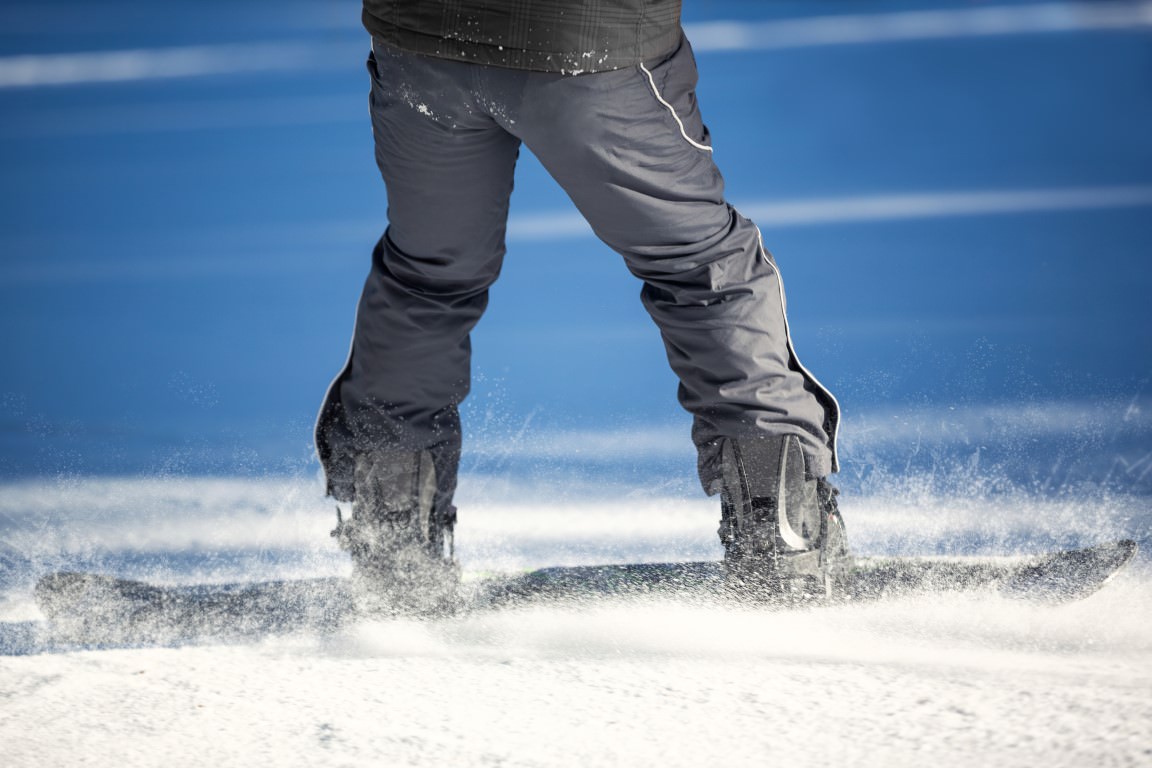
How Do I Know if My Snowboard Boots Are Too Tight or Too Loose?
Signs your Boots are too Tight
Your boots are said to be too tight if you have extreme difficulty getting your foot into the boot. You will be met with bunched up toes, pressure points and numbness that will amplify on the slopes. You may even develop blisters and rub away the skin around your ankle bones. Truly a painful experience it’s best to avoid.
If you’ve purchased boots that are too small for you, you can do a few things to stretch them out. The first step is to try wearing them around your home giving them time to stretch out. You can also wear an extra sock and do them up really tight. It will be uncomfortable but they will stretch a little bit.
Signs your Boots are too Loose
Signs that your snowboard boots are too loose are feet that move around, heel lift and provide no support along the sides of your foot. Loose boots can also cause pain as your foot shifts and is pressed up against the sides of the boot.
If your boot is too loose or has stretched out, not much can be done. You can try to add a thick footbed into it, add pads or find a thicker liner. If modification requirements are large, it’s best just to purchase a pair of boots that properly fit and sell the others.
Can I Heat Mold My Snowboard Boots?
Some snowboard boots have heat moldable liners that can be molded at your local boot shop or at home. They can also mold to your feet as you wear them while snowboarding.
How Can I Modify Snowboard Boots to Fit Better?
You can make a few different additions to your boot to help it fit like a glove.
Footbeds
The footbed that comes with your boot is a thin piece of foam with no support. As your boot packs out, this material will compress and allow for more space in your boot, which you do not want. See a bootfitter and find a generic footbed that fits your arch profile or splurge and get a completely custom footbed. An aftermarket footbed can drastically reduce foot pain and improve performance.
Custom Liners
Aftermarket foam addition, heat moldable or vacuum sealed liners create a custom boot for you that should eliminate all pressure points, provide maximum support and improve comfort.
Can I Use Regular Winter Boots for Snowboarding?
You can not use regular winter boots as snowboard boots. They do not provide any ankle support, stiffness or control. Using regular winter boots can be dangerous to yourself and others on the slopes.
Conclusion
Choosing the right snowboard boot to suit your needs can be an intense process. With so much choice, it’s easy to get overwhelmed. Nonetheless, finding the right boot will keep your feet happy, improve your performance and aid in your development as a rider. Do your research, ask lots of questions, and most importantly, go into a store and try on different brands before you buy.



